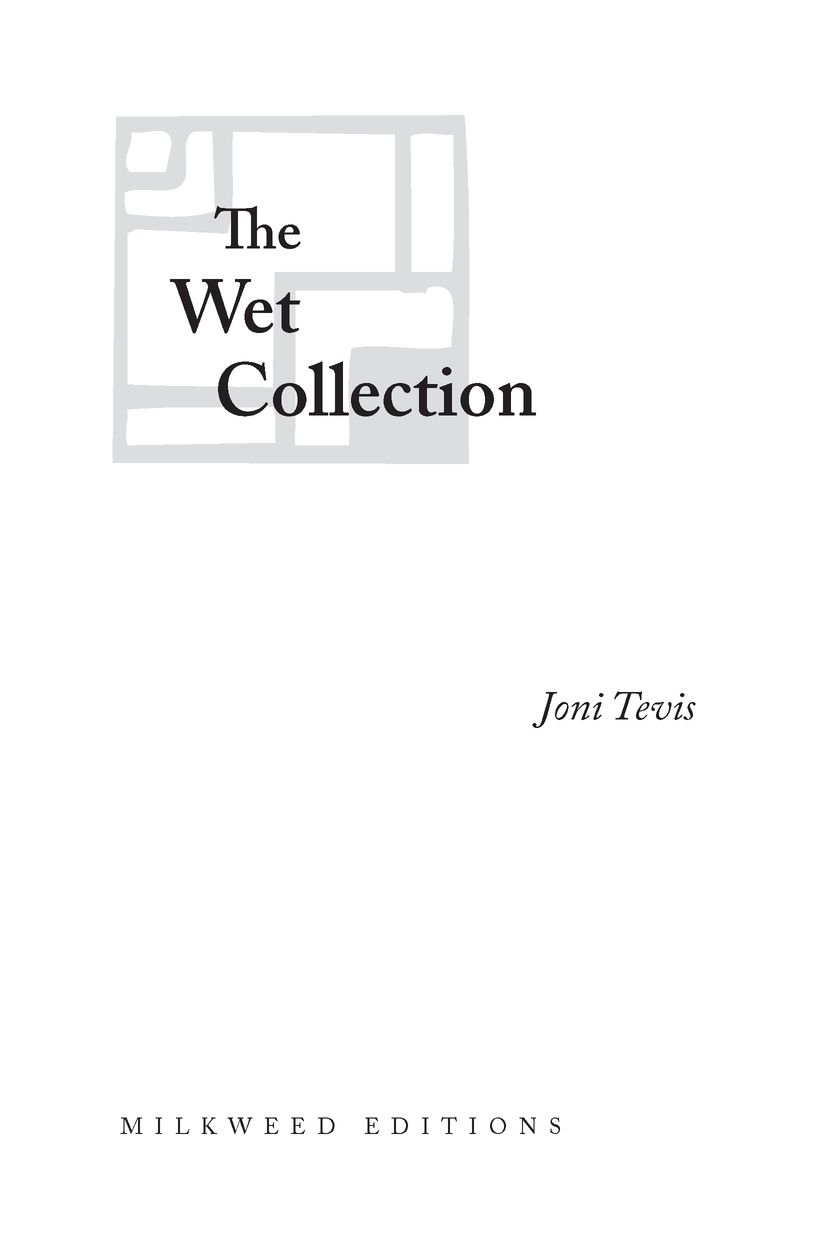Table of Contents
FOR MY PARENTS,
EARL LEE TEVIS
AND
MARGIE ANN (MOORE) TEVIS
Prologue
The Wet Collection
The bellies of the birdsphoebe, grackle, redwing blackbirdhave been stitched in neat zigzags from crop to throat. Someones patient hand pinched the lips of the emptied breast. Someone pushed insecticide-laced batting into the cavity. Someone tied the knot.
Here, in the basement of the natural history museum, they understand the virtues of careful storage. The vaults hold hundreds of birds, stuffed and shelved for study. People bring what they find: sparrows, mourning doves, the common birds of the city. Then someone eviscerates the dead thing, sprinkles cornmeal to soak the blood, glues cabochons of glass for the eyes.
This is work that few see. We are here only because the quiet curator took an hour from her afternoons work to show us around. Handwritten notes line a drawer of eggs from a donated private collection. One note, written in a deliberate script in faded brown ink, reads: Collected under a clump of grass approximately 3 feet from a pasture road. A.S. Wilson, 1919. This in a curving, fountain-pen script nobody has any more. What now of the pasture road? Is it there still; is it a superhighway? The egg, so fragile, and its clump of grass remain after the man and the world he noted so carefully have vanished.
The wet collection is a well-stocked pantry, its shelves full of ranked bottles and jars. There are capped plastic drums of paper-wrapped voles, evidence of a research paper (now abandoned) on the boom and crash of vole populations. From vole tails, the trained scientist can determine body-fat percentage and other useful statistics. As the vole goes, so go the voles predators: owl, badger, fox. One jar is jammed full of skinless, headless, eyeless carcasses. Someone cut out corneas, but we dont know why. A voles eyes are small and black, stubby as pencil points.
Another shelf holds jarfuls of dried tongues: flamingo, great blue heron, crowned and sandhill crane, American bittern, and roseate spoonbill in one; in another, woodcock and woodpecker, desiccated, labels tied to each with pieces of thread (collected 1952, 1961). They should be packed in salt, these scraps of dried flesh, like capers or artichoke hearts. A mooses wide tongue floats in alcohol.
An old pickle jar holds the face and long, bent ears of a jackrabbit. Where its eyes should be there are only bits of skin, blank and white. The stuff of nightmares. When we walk past, dark-tipped guard hairs wave in the jars yellowish fluid. The curator locks the door behind us.
There is something repulsive in this, these parts taken without a whole. We have tongues but no cranes, tails without voles and caches of grain, a tattered seagull but no sand or waves or thermal air current, and without these things, the jars are full of creatures eminently dead, mere fragments enshrined. The snapping turtle with two heads is misplaced no matter where it sits.
And yet. The curator lifts the dead grebe carefully from its place, reads the label she wrote long ago. Fingers the down. She slides the drawer shut and opens another, this one holding cedar waxwings. Some of them still have red tips on the wings, she says, and picks up one after the other until she finds one that does. Like flecks of house paint. Spatters so small youd never see them in the field. Pilgrims with their relics are not more respectful. Long years of handling fragile things have made her touch light; each specimen is secure in her hands. She collects data one piece at a time, her eyes gleaming with facts. The kiwi, whose egg is a third as large as its body, breathes through the end of its beak. The star-nosed moles twenty-seven tentacles, tipped with electrical sensors, help it find earthworms, its favorite food. See and touch the ostrich egg, pocked and dimpled like grapefruit skin; see the praying mantisalso called the devils rearhorse, or soothsayer, or mule killerpinned to balsa wood. Careful study is a holy work.
Before we leave, the curator tells us about her first job at the museum, transferring to tiny labels field notes someone else had taken. She recorded genus and species, collection date, location, in miniscule handwriting with a fine-pointed pen. Someone else matched specimen with label. The hours I spent, she says, keeping records on animals I would never see. It has been a long time since Ive seen such faith. Wishing us well, she turns to her work, and we show ourselves out and up to street level, leaving the collections behind.
Today Im thinking of the quiet curator, secular mystic, care her creed and discipline. In her basement room she records the mysteries wed miss otherwise. Sometimes Im stopped cold by dragonfliesdevils darning needles, snake doctorsrising in glittering clouds to scatter, sun flashing from taut wings, over streets littered with Gods dropped handkerchiefs, scribbled notes.
I.
A Field Guide to Iridescence and Memory
WHAT ARE YOU LOOKING FOR?
Something of interestoverlooked, easily missed. Memory reveals itself in flashes: a red window of blurred desert, skin stained and pricked by wild blackberries. Eyes open for the image that summons the memory.
GETTING STARTED AND SETTING OUT
My favorite chapter in any field guide. What to pack in the canvas bag? Newsprint for wrapping specimens; sandwich and canteen; a hat to cheat the sun; notebook and reliable ink. Keeping notes in the field is the hallmark of the dedicated student. Otherwise, once home, youll unpack nothing but a bag of rocks. Your notes will provide context, nail down ephemera (creek bed, mile 1.2, partially immersed, waterline). Your notes will be the record that survives you.
Bring silence, and an ear tuned to slight differences. Bring palms embedded with grit; bring water. Comb the world for clues. The banded agate damp with lake water, crusted with sand: get close, peering, picking through. Find the pottery shard hid in dirt; find the dirt. Exile is a condition of the redeemed life. Remember: you find what you look for; when presented with a fragment, fit a builded life to it. Line the pieces up and study them, catalogue and compare. Remember to keep careful notes. In India ink, which resists fade and run.
SPECIMEN: DAMSELFLY
The shape of a flattened oval, another; a pair, cut clean, as by newly sharpened shears. Black like deep-pile velvet, rich, topographic: silvery along the wrinkles ridges, cave-black in the valleys, these wings fused to a peacock-blue stylus. The dying damselfly, shuddering in my palm, her body shining like a radio tube, like a bugle bead, like a Christmas ornament: blown glass lined with aluminum, cheap, yet carefully packed in its nest of crushed paper, waiting for next year.
SPECIMEN: SILK
One night, walking through the woods, I came across a spiderweb big as a hula hoop, anchored to two shortleaf pines. See the magnificent thing, fragile diamond sheet, the maker inverted and swaying, knitting up the gaps. Without pausing, she dropped from one spoke to another, pulling a strand taut, anchoring. The lines, close as a records grooves, shone violet and lime in the flashlight. She tatted a zigzag of thicker stuff down the middle: a decorative touch, because it delighted her.










